
The Metropolitan Theatre set the stage for an...
Built on the site of the University of Washington’s first school building, the Met closed...
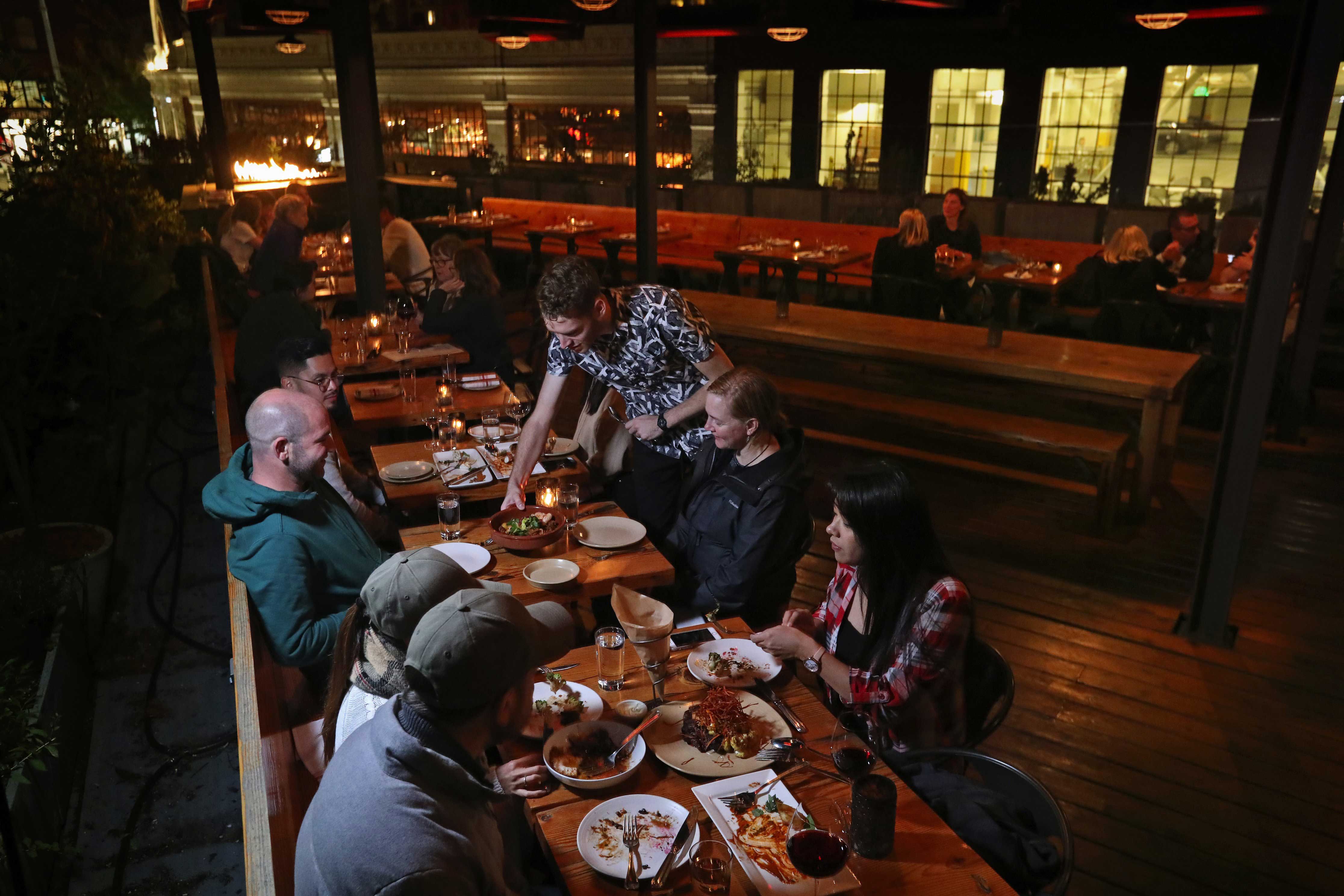
Skylar Swenson, an expediter at Terra Plata on Capitol Hill, with guests on the restaurant’s rooftop deck. (Ellen M. Banner / The Seattle Times)
Not the newest or the hottest —just some of our very best
NO RESTAURANT is essential. Dining out is a luxury, obviously. And new restaurants are opening in newly luxurious Seattle at an overwhelming pace — hundreds over the past year.
With so much novelty, the impulse to chase the shiny and new when it comes to dining out can seem irresistible. But I started thinking about the older spots, the tried and true, the ones that tell us something about this beautiful place in which we live. I thought of the restaurants that, when asked for a recommendation that’ll be extra-super-good, I name over and over. Not the newest and the hottest, but the quintessential ones that consistently make us so, so happy. They are not inexpensive — a couple, especially — but the pro tips here can help put these places within reach.
If you just got here, it’s not pure romance to say that eating at these establishments can help you understand where you are. If you’ve been here all along, they can help you remember why.
The fact that this list ended up organically diverse is worth celebrating. And here, in no particular order, are 10 essential Seattle restaurants.
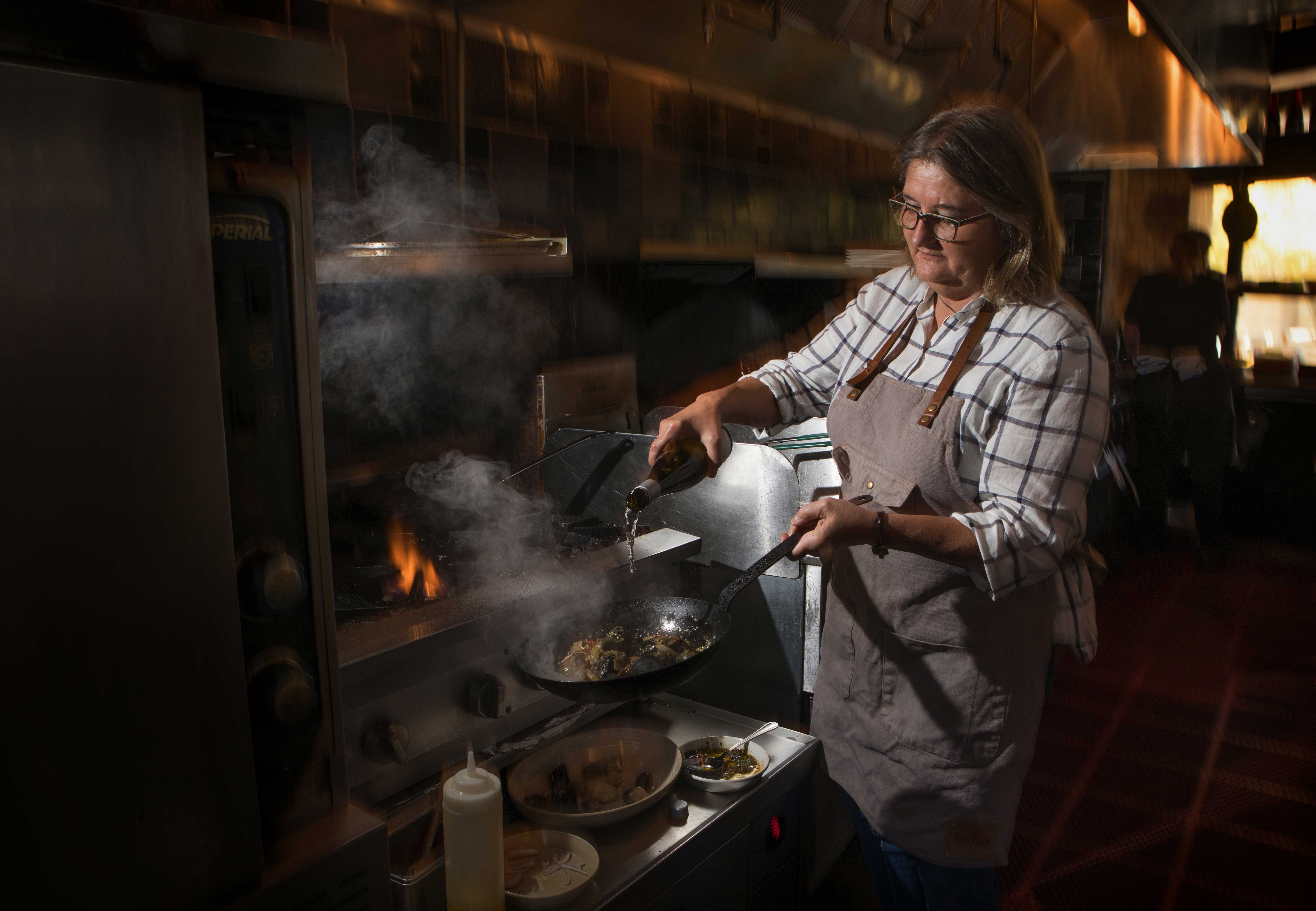
Tamara Murphy, chef/owner of Terra Plata on Capitol Hill, won a James Beard Award back in 1995, when she worked at Campagne. Today, she’s at the heart of Seattle’s restaurant community. (Ellen M. Banner / The Seattle Times)
Some very particular gourmands visited not long ago — the parents of a friend, so serious about dining that they keep their own restaurant-rating spreadsheet. Their Seattle winner, and one of their all-time best places anywhere: Terra Plata.
Chef Tamara Murphy’s wedge-shaped restaurant on Capitol Hill is all windows on two sides, with the bar and kitchen abuzz at its heart. The wood throughout is honey-gold, from the rough ceiling with its huge beams to the well-loved, varnished tables and their sturdy chairs.
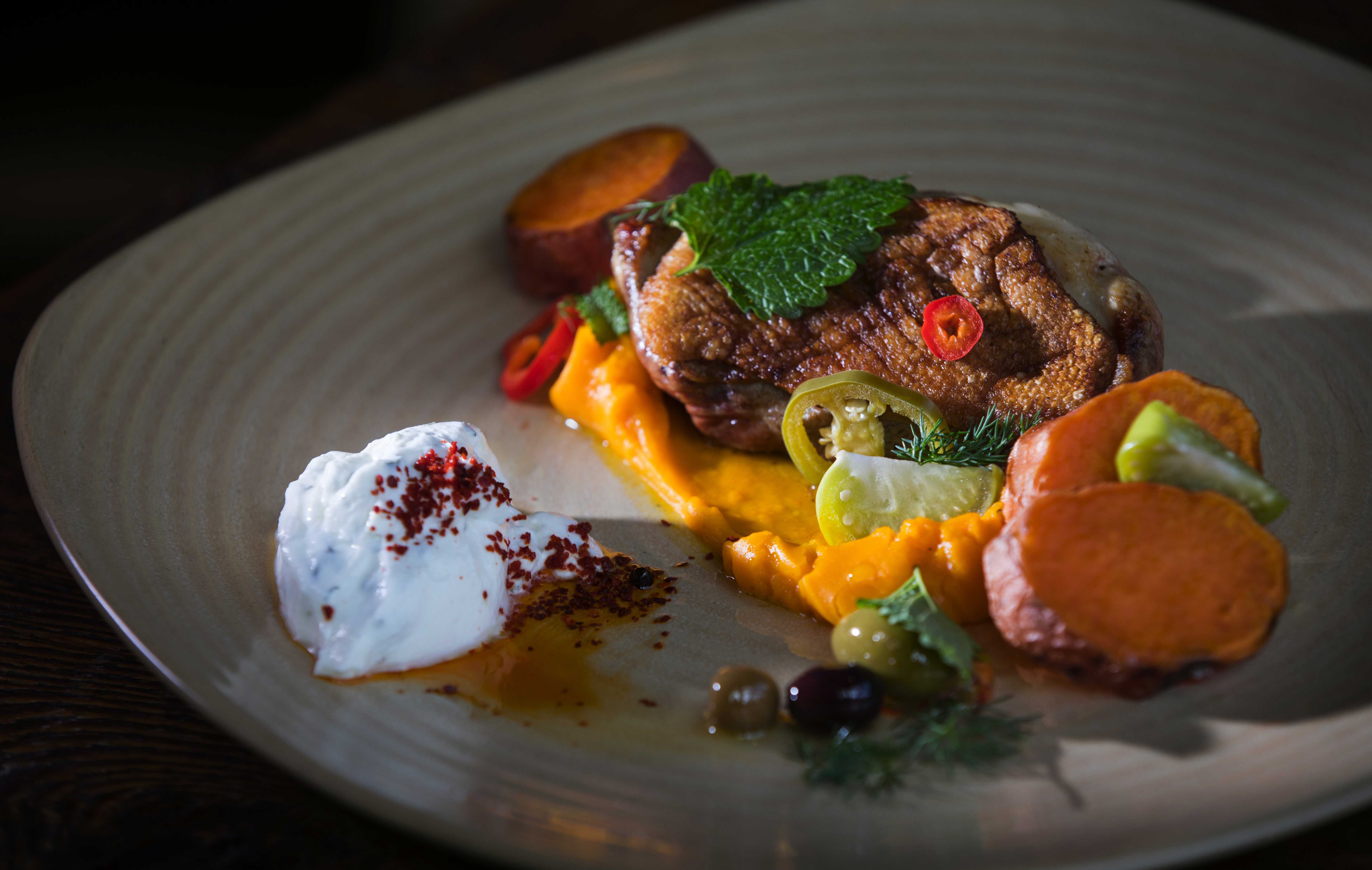
Duck with sweet potato, Calabrian chili, green tomatoes, labneh and olives at Terra Plata. (Ellen M. Banner / The Seattle Times)
Murphy ran the more-formal, also highly esteemed Brasa in Belltown for 11 years before opening Terra Plata in 2011; Spanish accents carried over in the menu, but this place is about the love she has for the Pacific Northwest — and vice-versa. She supports local growers and producers; they bring her their best; regulars from the neighborhood and those in the know from beyond reap the rewards. Sometimes herbs come from as close as the rooftop (also an outdoor dining paradise when the weather’s nice).
One thing that never comes off the menu: roast pig, richly flavored and falling-apart tender, served with chorizo and clams cooked in its smoked paprika-spiked broth (a dish for all seasons, but a special winter’s-night pleasure).
Murphy runs Terra Plata with her life and business partner, Linda Di Lello Morton, and with chef de cuisine Josh Hart (who’s also cooked at Monsoon and The Whale Wins). Murphy’s James Beard Award is from 1995, during her time at Seattle’s storied Campagne. The force of nature, year after year, behind all-star-chef fundraiser-bashes An Incredible Feast and Burning Beast, Murphy’s at the heart of the Seattle restaurant community.
Pro tips: Make Murphy’s signature dish at home — the roast pig recipe’s in her heartfelt, accessible cookbook “Tender.”
Where: Capitol Hill; 206-325-1501; terraplata.com
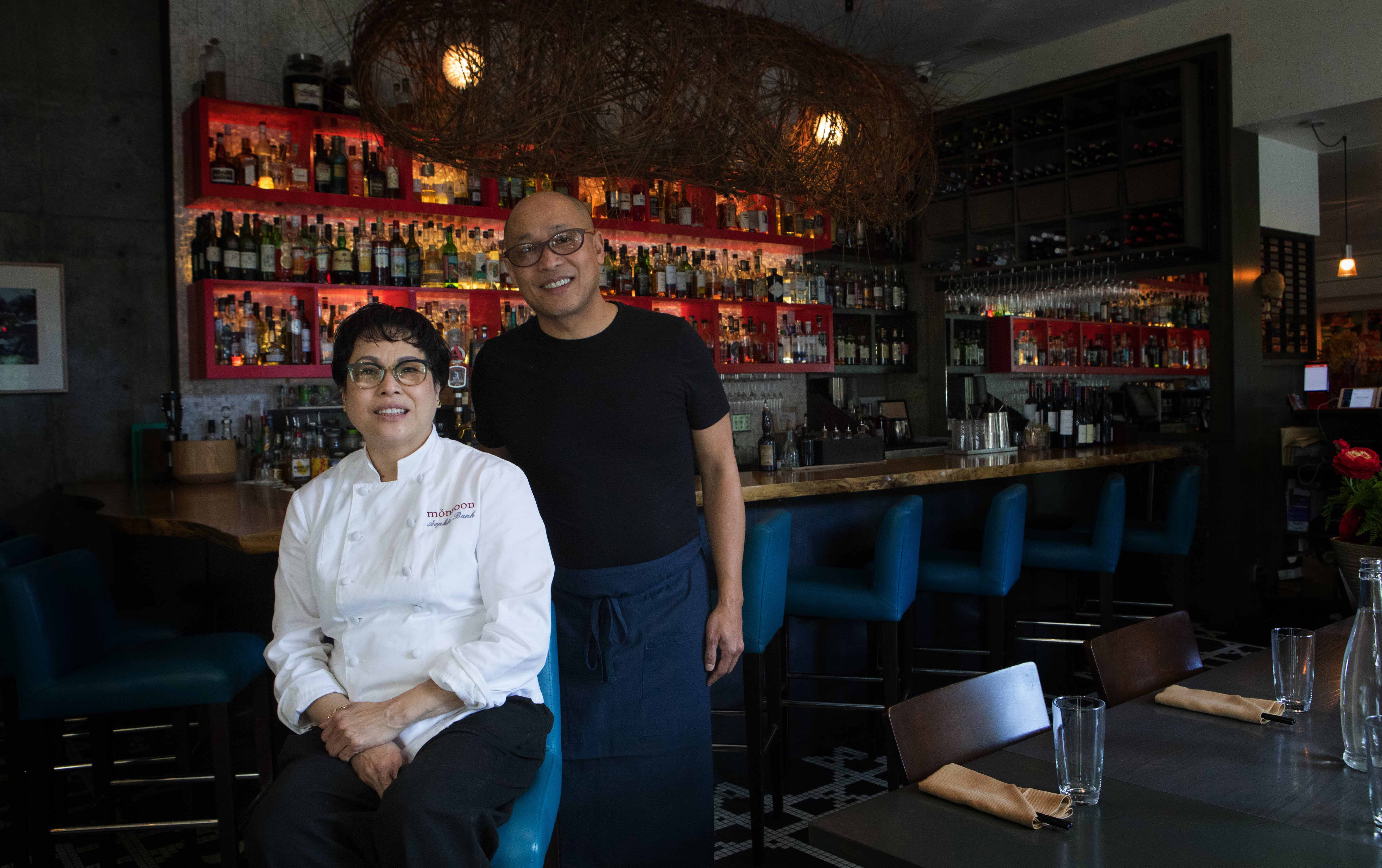
Sister-and-brother Sophie and Eric Banh own Monsoon on Capitol Hill, along with another branch in Bellevue, three locations of the more-casual Ba Bar and the restaurant Central Smoke (formerly Seven Beef). (Ellen M. Banner / The Seattle Times)
Siblings Eric and Sophie Banh grew up in Saigon, where the cuisine represents an intersection of fresh ingredients; local traditions; and influences from China, France and beyond. They opened Monsoon on a quiet Capitol Hill street in 1999, seeking to blend (their word) the culinary world of Vietnam with Pacific Northwest innovation (ditto). In a city accustomed to inexpensive pho shops, an upscale Vietnamese restaurant was indeed an innovation, and in the hands of the Banhs, a welcome one.
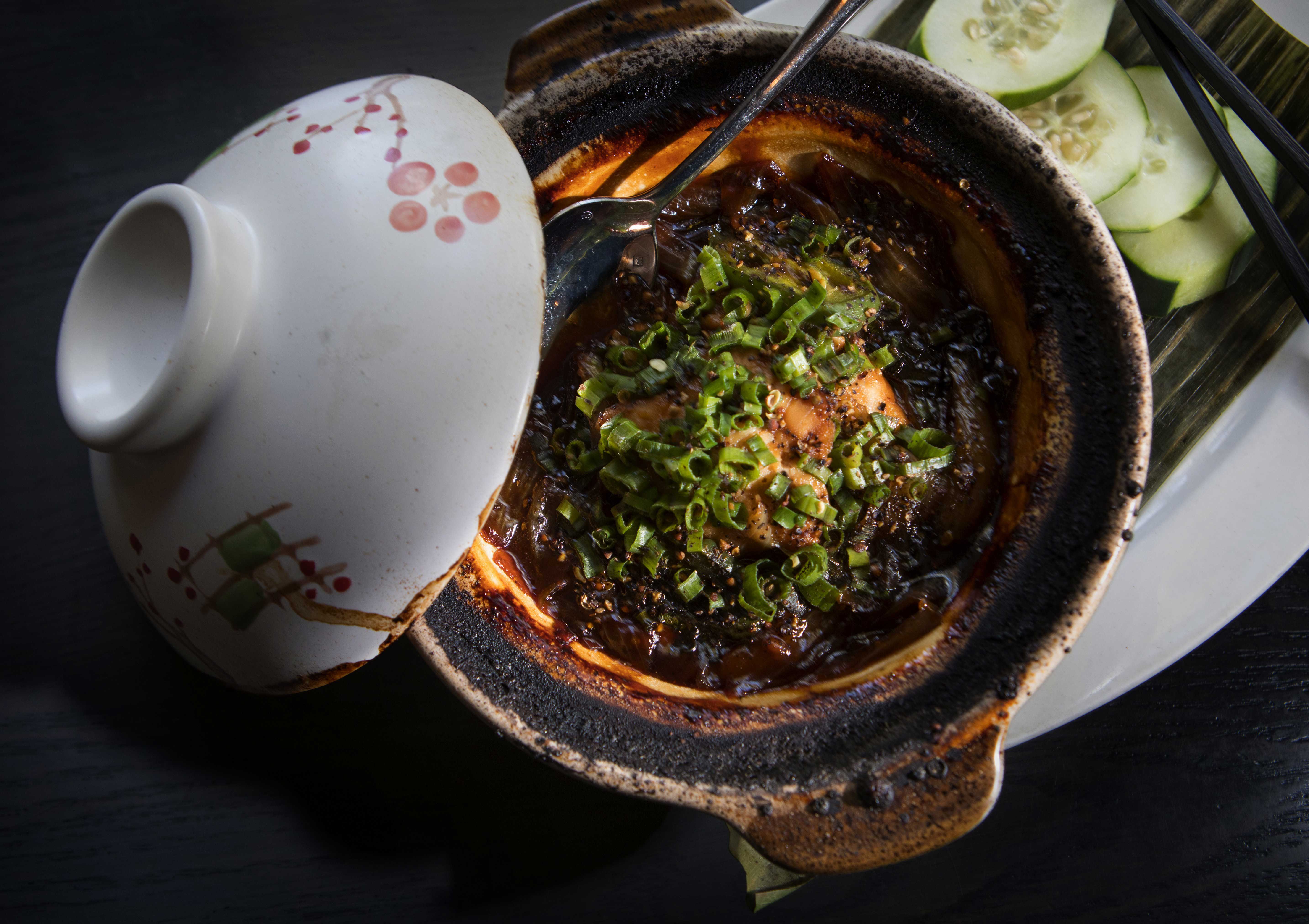
Caramelized Idaho catfish claypot made with fresh coconut juice and green onion at Monsoon on Capitol Hill. (Ellen M. Banner / The Seattle Times)
What this has meant on the plate is almost two decades of pleasure: the dual delicacy of glass noodles with Dungeness crab, perfectly seared scallops sparked with ginger sauce, crackling-great imperial rolls with Carlton Farms pork, lemon grass claypot chicken with premium Red Boat fish sauce. Sophie seems to work behind the scenes, while Eric is a fount of knowledge and frankness — he’s fascinating to talk to about, say, fish sauce, and he’s an ardent defender of the cost of high-quality, delicious food that some people call “ethnic” and expect to be cheap. (Chef Rachel Yang shares the latter sentiment.)
Along the way, Monsoon expanded from one tranquil, low-ceilinged room to two, with the addition bringing an airier, sophisticated feeling and a very pretty bar. In nice weather, there’s now a rooftop deck as well. Oh, and there’s a Monsoon in Bellevue, too. And the Banhs’ more-casual Ba Bar, now in three locations, makes very good street-food-style Vietnamese food (and lots of cocktails).
Pro tip: Happy hour at Monsoon — or at the Ba Bars — offers lots of bites to try and particularly good deals on drinks.
Where: Capitol Hill; 206-325-2111; monsoonrestaurants.com
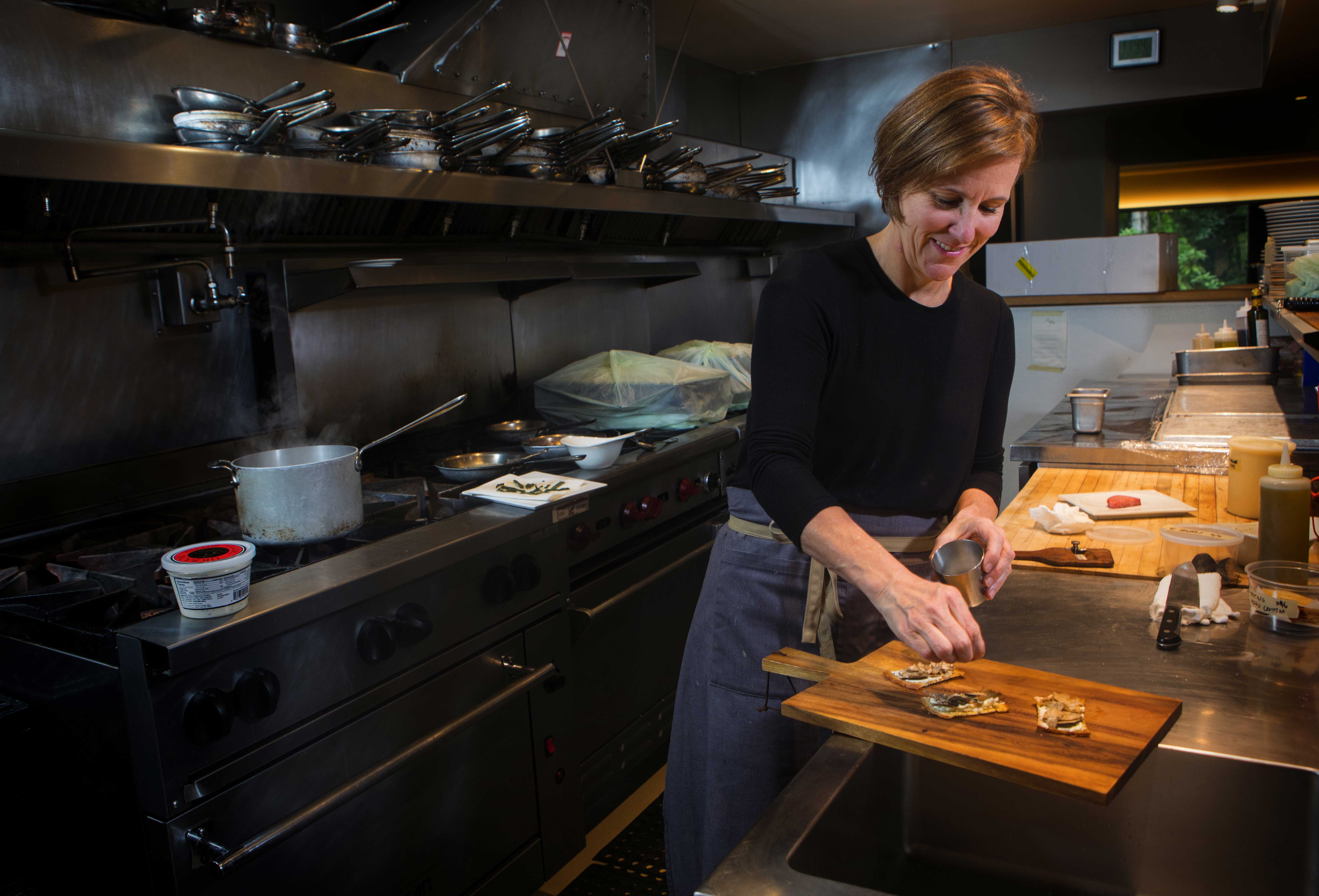
Chef Holly Smith shaves burgundy black truffles onto potato-bread crostini spread with truffle butter at her Kirkland restaurant, Cafe Juanita. She won a James Beard Award in 2008. (Ellen M. Banner / The Seattle Times)
When a huge maple fell onto Cafe Juanita last year, chef Holly Smith got the roof repaired and sent the tree to local artisans Meyer Wells. It’s just returned in the form of custom-made, perfectly proportioned, 70-percent-cacao-colored tables, enough for the entire restaurant. The vista from Cafe Juanita’s Kirkland midcentury home isn’t quite as woodsy anymore, but the sense of space and place — of the Pacific Northwest welcomed in — is as evocative as ever. Smith, who worked at Tom Douglas’ Dahlia Lounge, then opened Brasa with Tamara Murphy, took charge of Cafe Juanita in 2000 — growing a garden out back by the creek, creating locally focused Northern Italian cuisine in the kitchen and winning a 2008 James Beard Award.
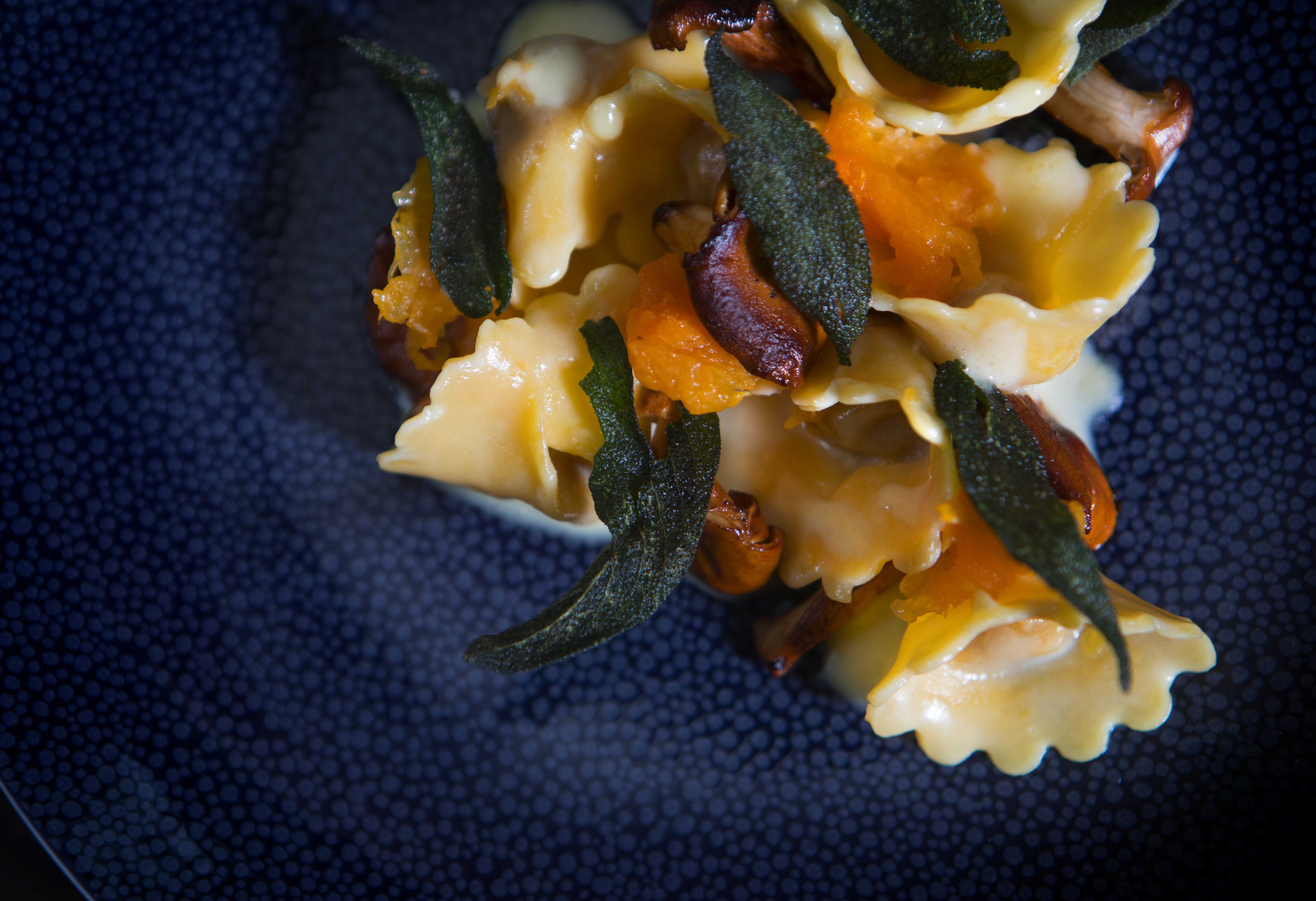
On a fall menu at Cafe Juanita: cappelletti with prosciutto filling, topped with roasted chanterelle mushrooms, butternut squash and fried sage. (Ellen M. Banner / The Seattle Times)
It’s her only restaurant, and truly hers: Smith bought the property in 2015, and her subsequent interior remodel created a paragon of understated luxury. Cafe Juanita’s service extends the style and comfort, appearing effortless while accomplishing what newer restaurants can’t seem to. Another achievement: a sense of peace and quiet, yet still a thrum of anticipation. Credit the latter to what’s put on the tables by Smith and chef de cuisine Lauren Thompson: actually compelling house-made breads, inventive salads, gorgeous pastas, the famous Arneis-braised rabbit, exquisite desserts. The beginning and the end are brought to you by pastry chef Junko Mine, herself a Beard nominee.
Pro tips: In summertime, come for the much-less-pricey patio menu, or learn how to make Cafe Juanita-quality pasta at home anytime from Villa Francesca.
Where: Kirkland; 425-823-1505; cafejuanita.com
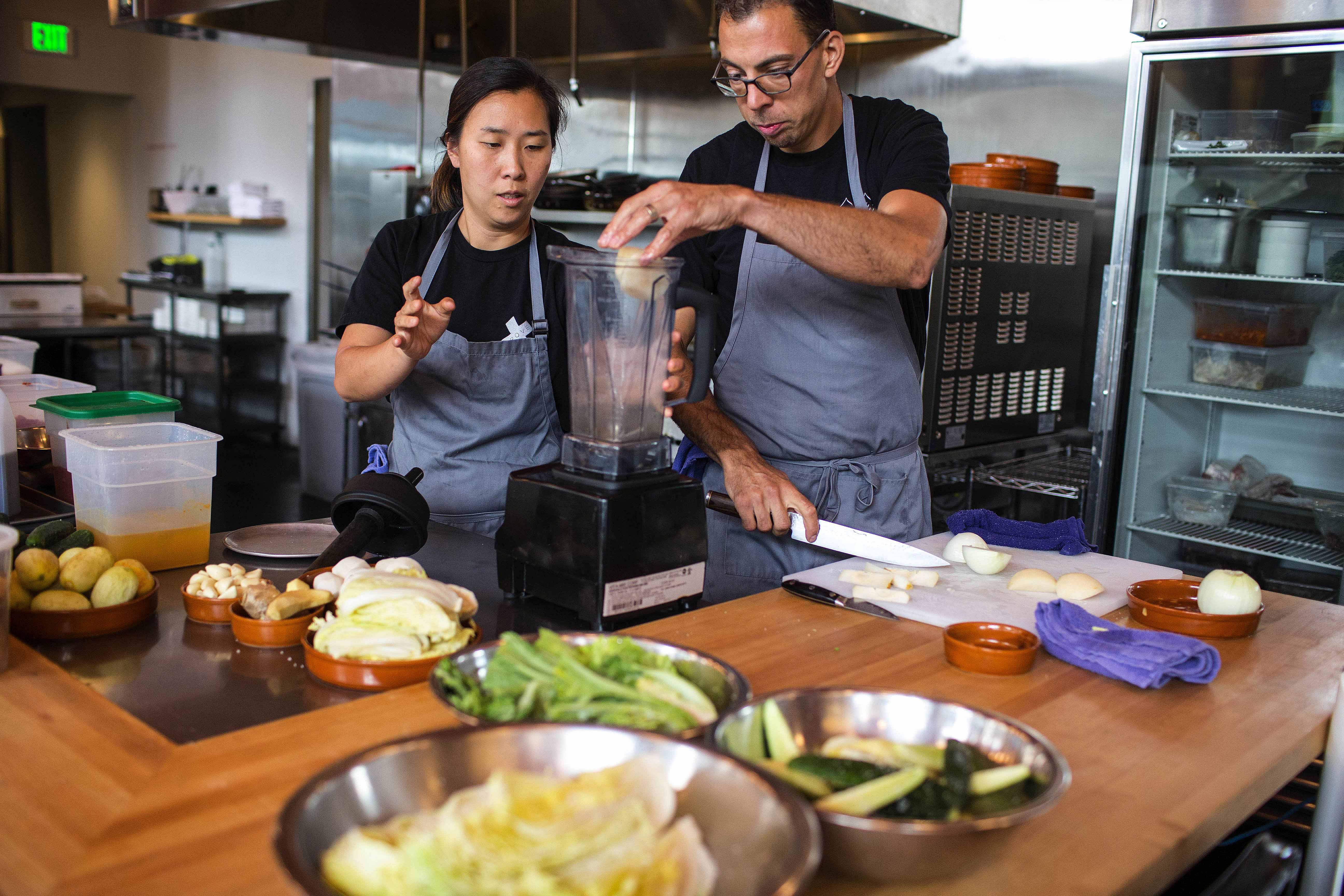
Rachel Yang and her husband, Seif Chirchi, make kimchi at Trove, their Capitol Hill restaurant — they also own Revel and their original jewel, Joule, which opened in 2007. (John Lok / The Seattle Times, 2015)
Seattle’s lucky to have Rachel Yang and Seif Chirchi — with their culinary résumés, they could’ve done pretty much anything, anywhere. They met working at the vaunted Alain Ducasse at the Essex House, and Yang also cooked at haute Per Se, making coming here together in 2007 to start Joule in a Wallingford shotgun space a bit of a rogue move. It was just them, at the beginning, in each other’s faces 24/7, and it was hard.
A decade later, they’ve also got Trove, a sprawling place for Korean barbecue and wokked noodles, as well as smaller, street-food-centric Revel. Both are excellent, but Joule is the jewel of the trio. In 2013, it was reset in an airy, renovated Fremont/Wallingford warehouse, with clean, contemporary lines in which the food could shine (that and a high-up “JEWELRY” neon sign). What comes out of the open kitchen is composed with spark and deep technique — an uncommon combination of interesting and remarkably delicious, with lots of umami but, still, balance. The white stuffed kimchi is a must; steak, several kinds, is marvelous here; vegetable dishes tend to be incredible; all Yang’s noodles are almost imperative; and what about the geoduck fried rice? Bring several friends, ones who’re willing to share.
Yang has been a contender for a James Beard Award seven times (!). Maybe this is her year. It should be.
Pro tip: Joule’s weekend brunch buffet features up to a dozen dishes from a different country every month. It’s really good, and it’s all you can eat for $14. Yes!
Where: Fremont/Wallingford; 206-632-5685; relayrestaurantgroup.com/restaurants/joule
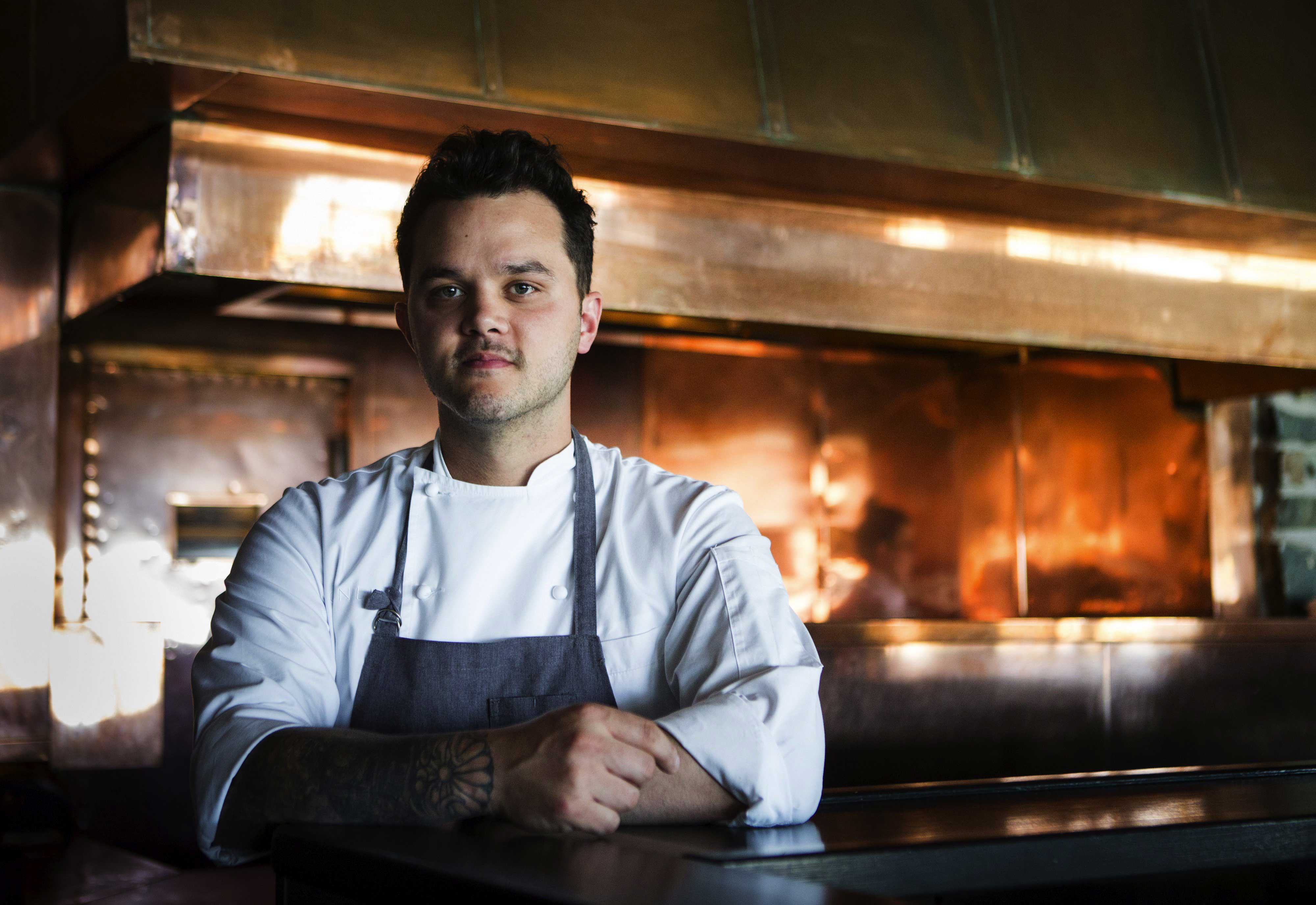
Brady Williams came from New York to be the executive chef at Canlis — just the sixth in the renowned restaurant's history. (Alan Berner / The Seattle Times, 2015)
Canlis is a classic: an iconic mid-century modern building, a breathtaking Lake-Union-and-far-beyond view, service that’s as seamless as service can be. You don’t so much go to Canlis as sink into its dimly lit comforts. And yes; it is priced accordingly: $135 for four courses and up.
Canlis opened in 1950. The menu at Canlis used to be a classic as well — the sort of steakhouse specialties that signaled Fine Dining in America for a long time. The female servers at Canlis also used to wear kimonos. Change is good. The third generation of owners, brothers Brian and Mark Canlis, made a bold move in 2008, when they hired chef Jason Franey from New York’s revered Eleven Madison Park. That went well, so when Franey departed three years ago, they made an even bolder move, bringing in under-30 rising star Brady Williams, who had been cooking at a Brooklyn pizzeria called Roberta’s — and, OK, its double-Michelin-starred sibling, Blanca.
Seeking to make Canlis “seasonal, inspired and relevant,” Williams conducts an ongoing, minute examination of flavors and methodologies, applying prodigious creativity while furthering the Japanese influence on the menu — his mother is from Japan. So, now, alongside the beloved family-recipe Canlis salad, you’ll find the likes of haiga rice simmered in brown-butter dashi with Dungeness crab, preserved strawberries and hazelnuts, or rib-eye with radicchio, rutabaga and fermented garlic.
Nominated for James Beard Awards over and over again, Canlis finally scored one after all the changes in 2017. It was for Outstanding Wine Program, but still: coincidence?
Pro tip: Get the Canlis atmosphere without the full Canlis bill with a trip to the lounge.
Where: Queen Anne; 206-283-3313; canlis.com
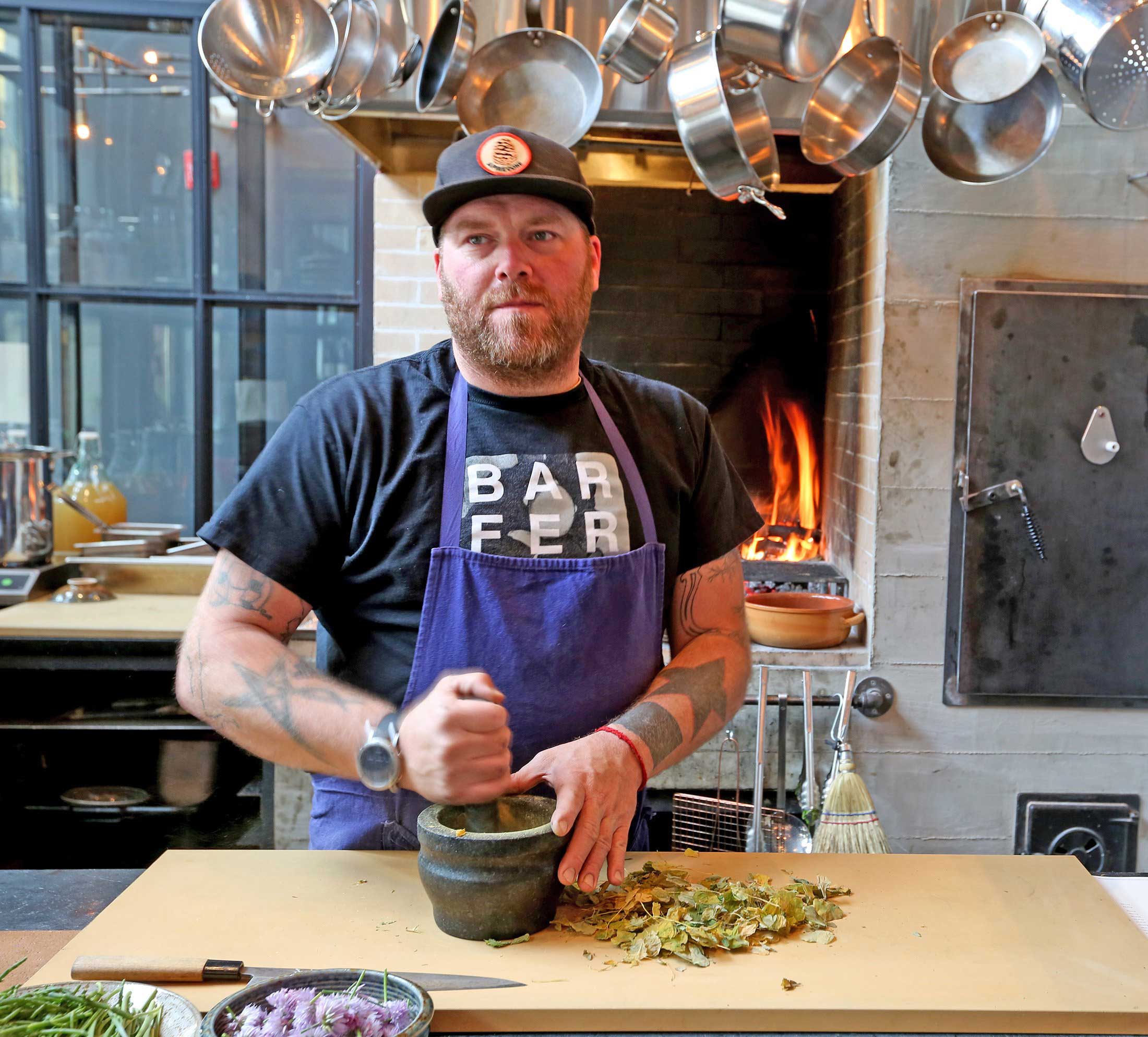
Chef Matt Dillon in the kitchen of his newest restaurant, Bar Ferdinand. He first opened Sitka & Spruce in 2006. (Greg Gilbert / The Seattle Times, 2016)
Matt Dillon opened Sitka & Spruce on a shoestring in 2006, when such a thing was still possible in Seattle. Lodged in a strip mall next to a Subway, the tiny Eastlake storefront did mighty things: Dillon took the reverence for local foodstuffs and the serious culinary technique he’d learned from Jerry Traunfeld at the high-end Herbfarm, then brought it down to earth for everyone. The low-key atmosphere, a certain DIY elegance and absolute seasonality met with simple, clear, lovely flavors. Sitka & Spruce felt revelatory and revolutionary, advance notice of how we eat today.
Dillon was part of a cadre of forward-thinking young Seattle chefs, including Renee Erickson, who were more conspiratorial than competitive. As he added more to his plate — now there’s the Corson Building, a Vashon Island farm, The London Plane, Bar Ferdinand — he became a mentor, too. Chef Logan Cox of brand-new Homer, Nick Coffey of Ursa Minor, and someone you might have heard of named Edouardo Jordan all cooked for Dillon, benefiting from his brain, taste and trust.
Sitka & Spruce moved to roomier Capitol Hill quarters in 2010, and Dillon won a James Beard Award for it in 2012. The wide-open kitchen and wood-fired oven make the space feel like a dream of a farmhouse, tucked away in the back of Melrose Market; a wall of old-fashioned windows and the distant wooden ceiling lend a graceful spaciousness. The Sitka & Spruce culinary aesthetic is currently under the care of chef de cuisine Danny Conkling.
Pro tip: Sitka & Spruce’s pleasant bar, a few steps from the restaurant inside Melrose Market, offers a happy hour with pretty snacks and nice drinks from 4 p.m. to 6 p.m., Tuesday through Saturday.
Where: Capitol Hill; 206-324-0662; sitkaandspruce.com
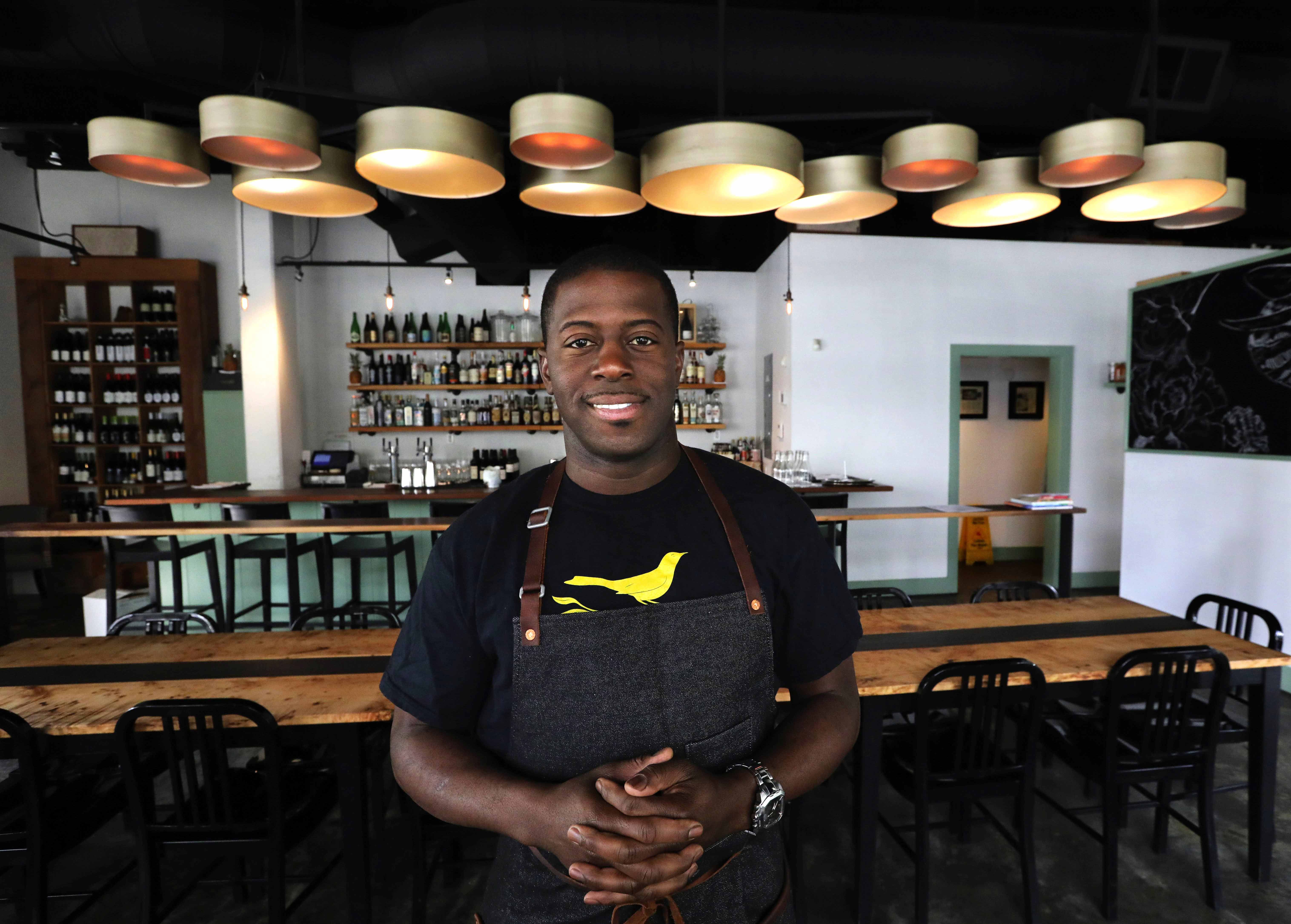
Chef Edouardo Jordan, at his restaurant Salare, won two James Beard Awards in 2018. He says he feels “a responsibility for me as an African-American chef to actually explore and educate [about] home Southern food.” The mockingbird on his shirt is the symbol of his restaurant JuneBaby. (Alan Berner / The Seattle Times)
Maybe the entry here should be Salare, chef Edouardo Jordan’s upscale tribute to Pacific Northwest ingredients and meticulous culinary technique. Some might say neither it nor JuneBaby — both under 3 years old — belongs on a list with chefs and restaurants who’ve been defining our scene and cuisine for much longer. The accolades Jordan and JuneBaby have piled up in record time argue otherwise, including two 2018 James Beard Awards. And at a time when the restaurant industry is, at last, beginning to grapple with its deep-set problems of equity (including in those most important awards), Jordan is addressing race head-on in his words, actions and cooking.
At JuneBaby, Jordan says, “It became almost like an obligation, almost a responsibility for me as an African-American chef, to actually explore and educate [about] home Southern food. It became a deeper mission … trying to pass that knowledge along to people as they want to learn — as they want to eat.” And to eat at JuneBaby — to taste “America’s culinary history … built on corn, rice, peas and the hog,” laced with our corner’s seasonal greatnesses, through Jordan’s vision — is a pleasure and a privilege.
Pro tips: Weekend lunch at JuneBaby offers a lower-priced taste of the menu, as does Moonshine Hour, weekends from 3 p.m. to 5 p.m. (try for it on Sundays, and you can linger long enough to get a spot for the extremely popular weekly fried-chicken dinner). It would be remiss not to mention that Jordan’s mac ’n’ cheese with Benton’s ham, available Thursdays only, is stellar. And Jordan has a third place, Lucinda Grain Bar, coming soon — stay tuned.
Where: Ravenna; 206-257-4470, junebabyseattle.com
.JPG)
Chef Renee Erickson at The Whale Wins, part of her newly expanded Seattle restaurant empire. (Ken Lambert / The Seattle Times, 2013)
Is The Walrus and the Carpenter the quintessential Pacific Northwest restaurant? It might be the first place you’d send someone on a pilgrimage to find it. Chef Renee Erickson’s now in charge of a sizable restaurant empire, but of all her places, this one sings the strongest siren-song of our region’s loveliest stuff. Oysters from local beds are ferried here to be pried open with care; foraged mushrooms are carried from the forest, then dressed with lemony hollandaise; steak tartare might be made with beef raised on Erickson’s picturesque Whidbey Island farm; cheeses come from close to home, made with care.
Her impeccable taste has wandered to a darker, more overtly posh place at her new Deep Dive at the Amazon Spheres, but The Walrus, open since 2010, is vintage Erickson. The mood is civilized but entirely celebratory, the feeling like a perfect party every night. Warm and light, French-admiring, it’s classic and classy but good-humored and fun. (See also her completely approachable cookbook/aspirational life manual, “A Boat, a Whale & a Walrus.” She got her James Beard in 2016.)
The line can be long, as no reservations are taken, but you might be able to sidle into The Walrus’ equally charming attached bar, Barnacle, for something to tide you over. Either way, it’s so worth the wait.
Pro tips: Over on Capitol Hill, Erickson’s less-mobbed Bar Melusine also serves beautiful oysters and sparkling wine, and her adjoining Bateau has an off-menu burger that gets you a taste at a bargain rate.
Where: Ballard; 206-395-9227; thewalrusbar.com
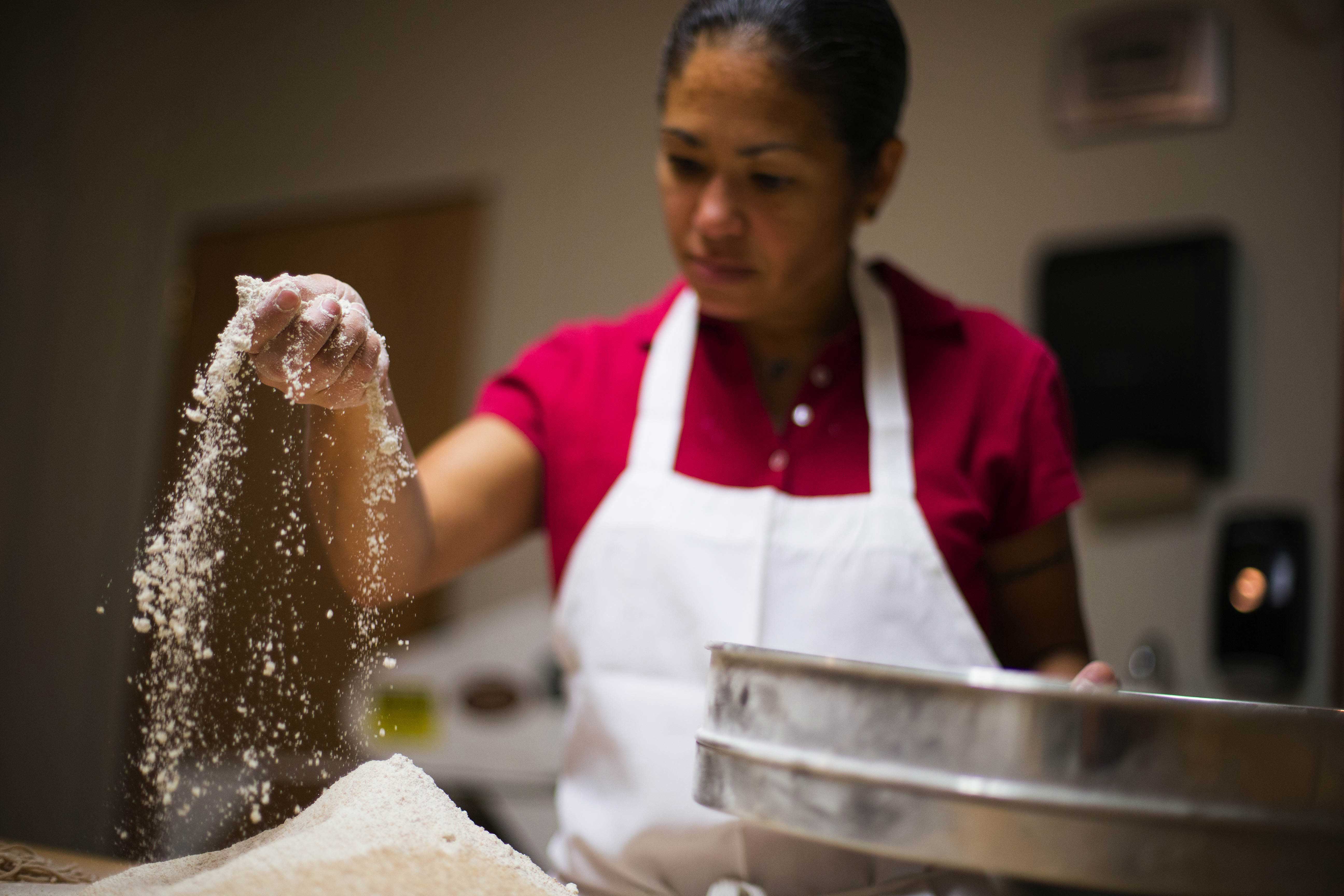
When chef Maria Hines opened Tilth in 2006, it was only the second all-organic restaurant in the country. (Sophia Nahli Allison / The Seattle Times, 2016)
It might not seem like a big deal now, but when chef Maria Hines a opened Tilth as an all-organic restaurant in 2006, it was only the second one in the country. And actually, it is, still, a big deal — all those places claiming “organic whenever possible” are accountable to zero standards. Tilth, the restaurant, is accountable to nonprofit Oregon Tilth, as well as to Hines’ own exacting ethics. She received a 2009 James Beard Award for it; she now also runs Agrodolce in Fremont (also, BTW, certified organic).
Instead of calling out what is organic or going the nebulous “when possible” route, things on Tilth’s menu that might not be organic are underlined — mostly wild foods, for which there is no organic certification process. A sampling from one fall day’s menu, put together with chef de cuisine Joel Panlilio, gives a taste of Tilth’s pure goodness: squash gnocchi with Foraged & Found mushrooms, labneh and pepitas; Arctic char with parsnips, kale and a pomegranate reduction; Snake River Farms pork cheek with Tonnemaker apple, cabbage and a cider gastrique. Like other chefs named here, Hines has forged deep and lasting partnerships with gatherers who walk our forests, small boats that carefully harvest from our waters, ranchers who raise animals with respect.
Tilth is housed in a Wallingford Craftsman bungalow with leaded glass windows, hardwood floors and walls the color of excellent butter — it’s elegant without grandeur, comfortable but special, quiet enough to hear yourself think. But for all its mindfulness, the food at Tilth also just makes your heart sing.
Pro tips: Brunch at Tilth is a manageable splurge and so good, your scrambled eggs might blow your mind. Speaking of, find Hines’ recipe for I Can’t Believe It’s Pot Butter at KUOW.org.
Where: Wallingford; 206-633-0801; mariahinesrestaurants.com/restaurants/tilth
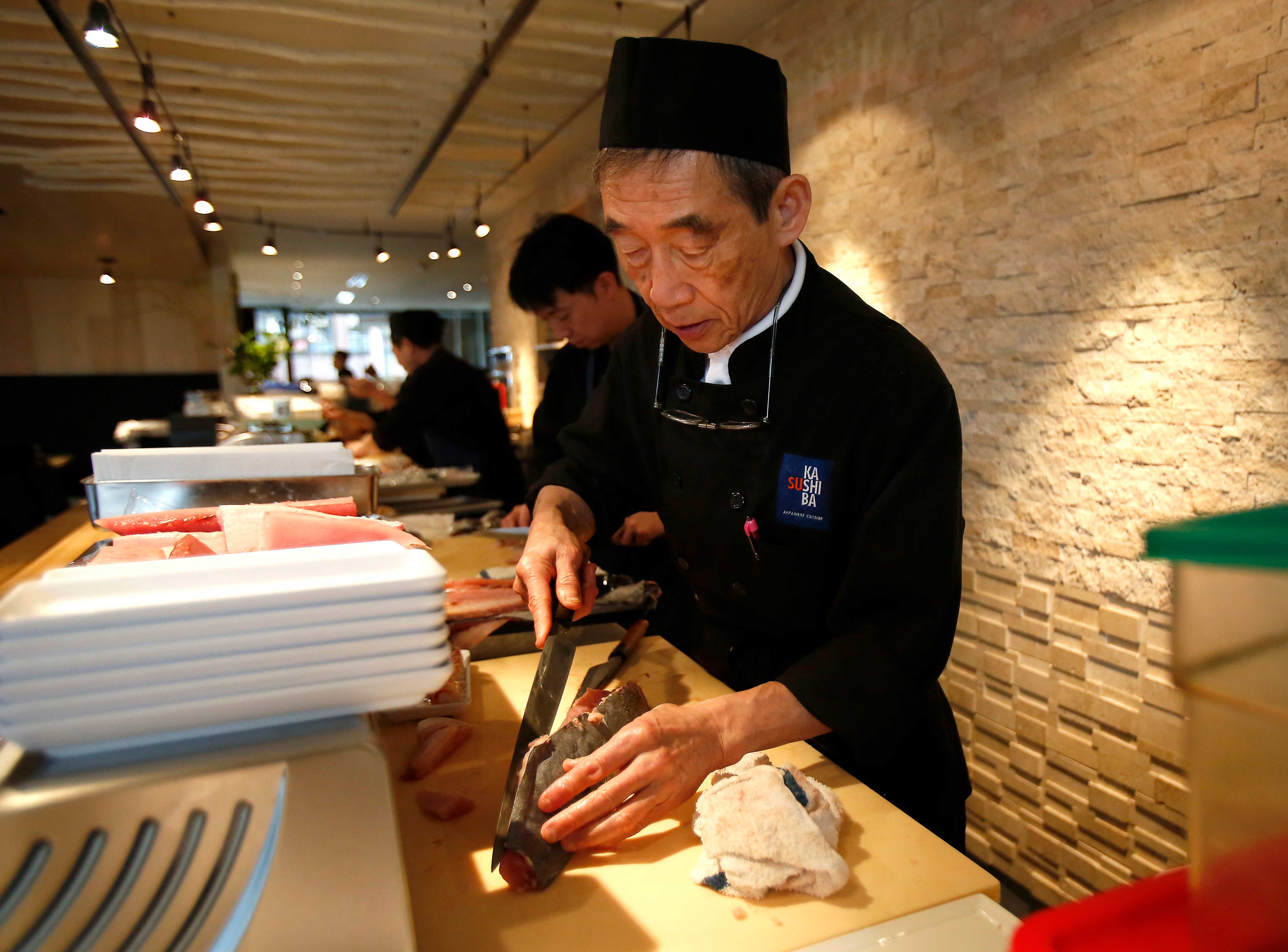
To get a spot up close to watch chef Shiro Kashiba work at his Pike Place Market restaurant, Sushi Kashiba, you must wait. It is worth it. (Sy Bean / The Seattle Times, 2016)
It takes patience to gain an audience with chef Shiro Kashiba. He’s only at his restaurant, Sushi Kashiba in Seattle’s Pike Place Market, on Monday, Wednesdays, Fridays and Saturdays (usually — call day-of to make sure). Reservations are not taken for the sushi bar, and only the first six people in line are seated with Kashiba (the first three seats, with a view of his hands, are the best). Supplicants begin to line up at or before 4 p.m., waiting by a fountain in the small, quiet courtyard (or, given rain, in a dampish, austere enclosure).
It is worth it to witness his work, experience his ways and eat his sushi. As he prepares nigiri, Kashiba’s hands make tiny, deft cradling movements, each piece of fish given its due, its balance found. He issues gentle admonitions: A hand-roll must be eaten immediately — “Only two bites!” — lest its seaweed cone get soggy. (Braying “a little light on the wasabi,” a businessman seated down the bar gets the subtlest side-eye.) The sushi itself is pretty much unanimously agreed to be the best in town — pristine quality, meticulously adorned with just a swipe of lemon and tiny sprinkle of sea salt, or a few grains of yuzu zest, or a momentary back-and-forth of the torch. Kashiba is also funny. Presenting you with the deep-fried head of your Hood Canal spot prawn, he’ll say, “Eat the whole thing! Eyeballs, ears, mustache!” It will be the best shrimp head you’ve ever had.
Kashiba started Seattle’s first full-service sushi bar. He was the first to serve now-prized geoduck, digging it himself — back then, it all went into chowder. Ever had sushi with salmon skin or salmon roe? Kashiba thought that up when he saw fishermen throwing it away, back in the day. Ask him, across the bar, and he’ll tell you. Watch his hands.
Pro tip: Shiro Kashiba’s memoir “Shiro: Wit, Wisdom & Recipes from a Sushi Pioneer” is a total joy and gives instructions on how to make his favorite dishes at home.
Where: Pike Place Market; 206-441-8844; sushikashiba.com
Bethany Jean Clement is The Seattle Times’ food writer. Reach her at bclement@seattletimes.com or 206-464-2050. On Twitter: @BJeanClement
Ellen M. Banner is a Times staff photographer.

The Metropolitan Theatre set the stage for an...
Built on the site of the University of Washington’s first school building, the Met closed...
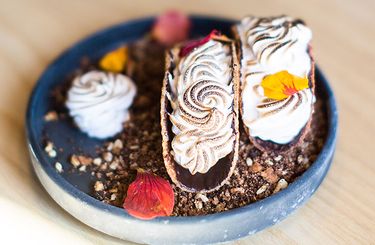
The Best New Restaurants of 2018
Savor smoked meats in the Central District. Head to Capitol Hill for whiskey highballs or bento bites. These are the year’s best new restaurants.